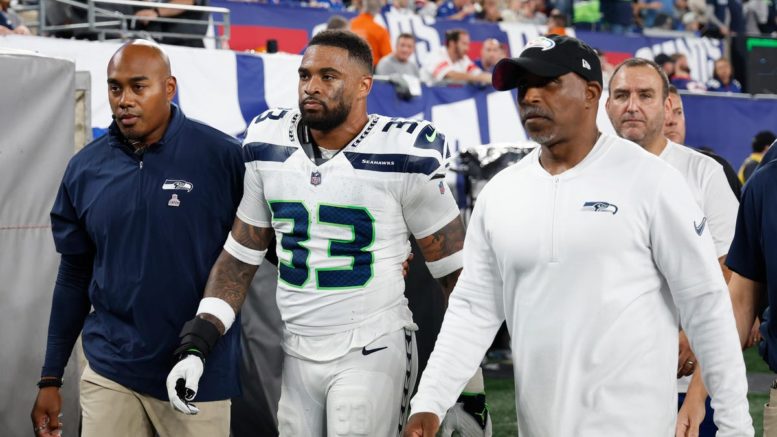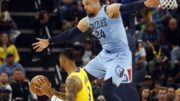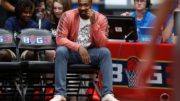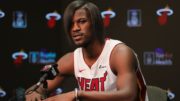While Jamal Adams’ concussed tirade at a concussion spotter is what’s making the news this morning, what we really should be talking about is that we witnessed an event about as rare as this month’s upcoming lunar eclipse: An NFL team handling a player’s hit to the head properly.
Adams, who missed 20 games with a quadriceps injury he suffered in Week 1 of the 2022 season, returned last night against the Giants, only to last 9 snaps before being removed from the game. As you can imagine, after being out for 13 months, Adams was less than pleased with the decision, and let it fly in the direction of the independent doctor/concussion spotter.
Adams, it turns out, went low to make a tackle on a Daniel Jones run and wound up taking a knee to the head when Jones tried to vault over him.
Adams was looked woozy and seemed to have difficulty getting up. But a few minutes later on the sidelines, Adams had clearly recovered himself enough to let the independent neurologist and everyone within earshot know how he felt about being taken out of the game. And here’s where the situation too often breaks down. A player, feeling no worse than he does any other time he’s playing football, wants to go back in the game. He pushes, he pleads his case, he wants to go back in. Probably his coaches and teammates want him to go back in, as well. Remember when Tua Tagovailoa was allowed back in a game after a hard hit to the head last September, leading head coach Mike McDaniel to say he was relieved “it wasn’t anything more than a concussion?” Tagovailoa wound up suffering multiple concussions last season, causing him to miss five games and the playoffs.
Earlier this season in college football, Michigan State Head Coach Mel Tucker was criticized for the continued play of kick returner Alante Brown, who returned to the game after being carted off the field in a backboard, saying, “For me, all those decisions are all medical,” Tucker said. “If a guy plays, if he doesn’t play, if he practices, if he doesn’t practice, it’s all medical. I don’t have anything to do with those. So if they tell me a guy is up and he can go, then he’ll play. If they tell me he’s down, then he’s out. So that’s what happened.”
Sadly, that’s the attitude far too many coaches have today, having grown up in the age of “shake it off, shake your head, clear the cobwebs.” McDaniel’s comment about Tagovailoa is indicative of how many in the league still view concussions as something temporary, something less injurious than blowing out a knee or ankle. In fact, symptoms of a concussion, like headaches, brain fog, fatigue, insomnia, vision problems, and memory loss can affect one for weeks, months, and even years after the initial hit. Concussions can even alter one’s personality. Without proper treatment, the symptoms can become permanent.
After getting his money’s worth with the concussion spotter, Adams was led back through the tunnel to the locker room, where he was declared out for the remainder of the game. And that is how the NFL’s concussion protocol is supposed to work. Despite pressure from a player who really, really wanted to return to the game, the medical professionals involved stuck to their guns, and Adams remained on the sidelines.
When it comes to protecting the brain health of NFL players, too often the media spends Sunday nights and Monday mornings reporting on players who were allowed to remain in the game when they had obviously sustained a brain injury. On the rare occasions when the NFL gets it right, it’s worth acknowledging.
Original source here
#Seattle #Jamal #Adams





